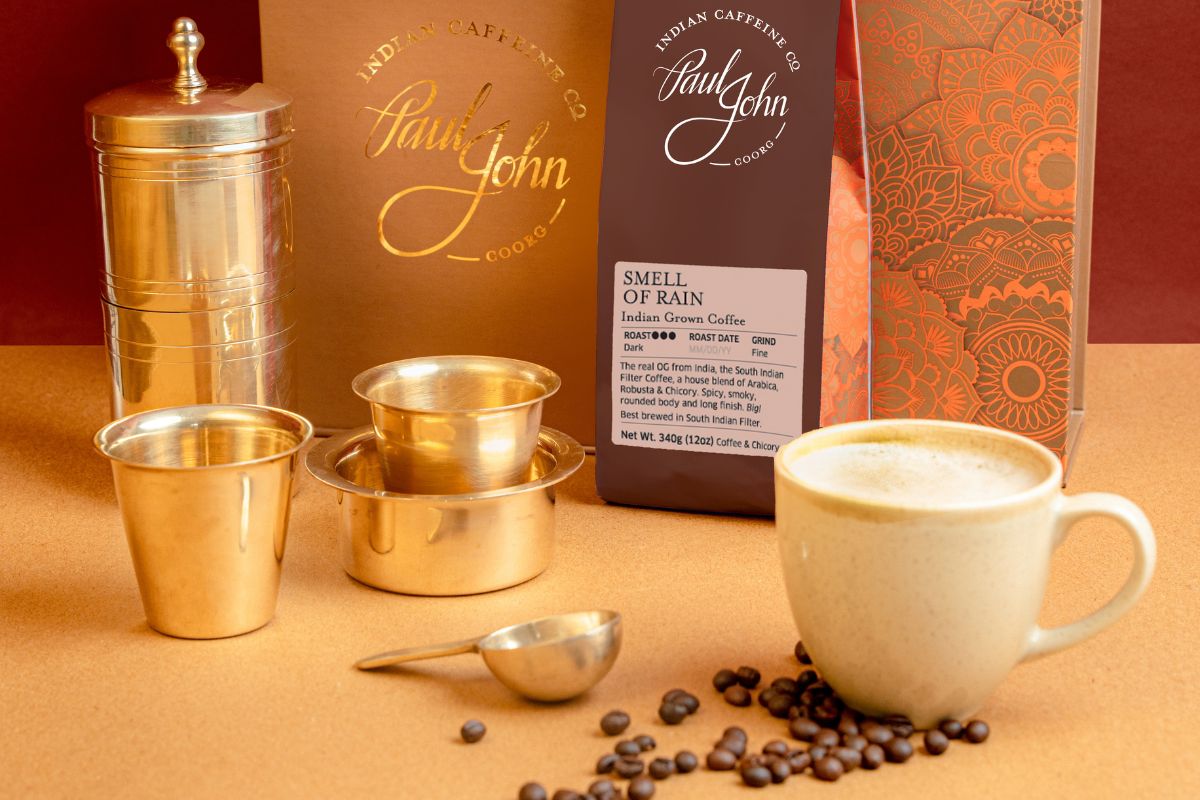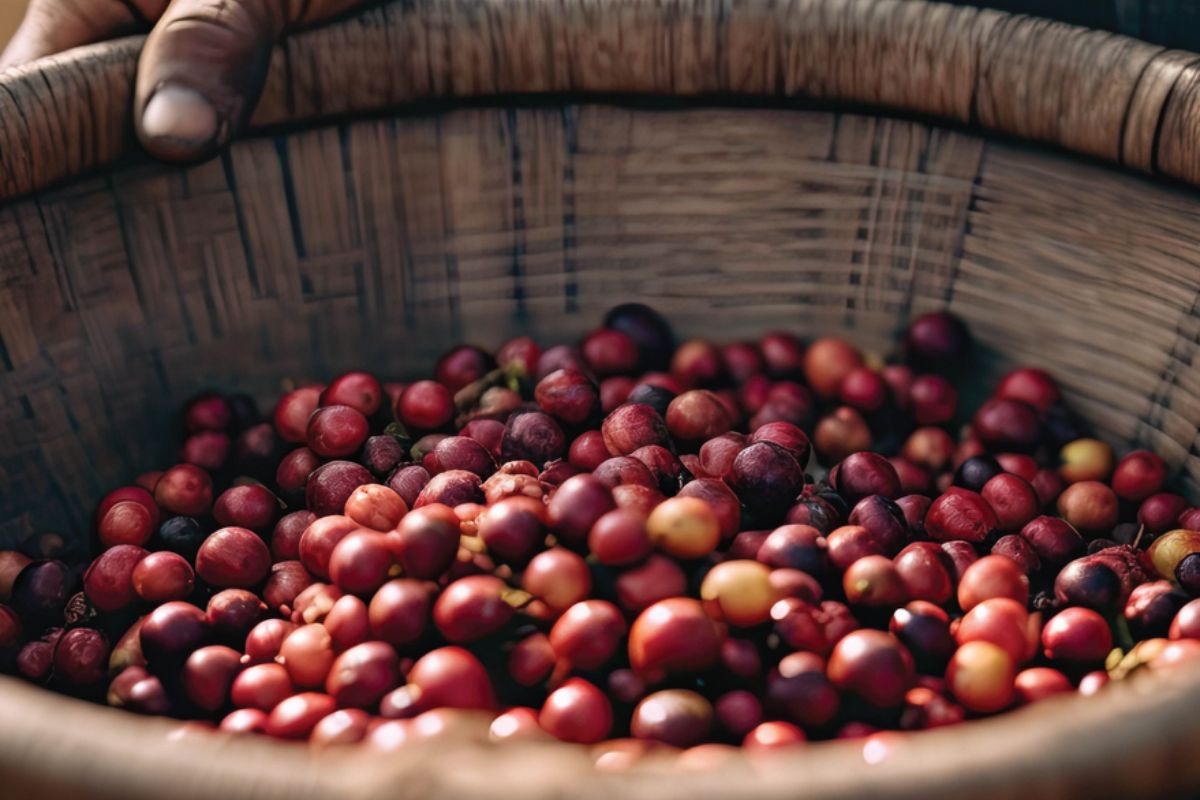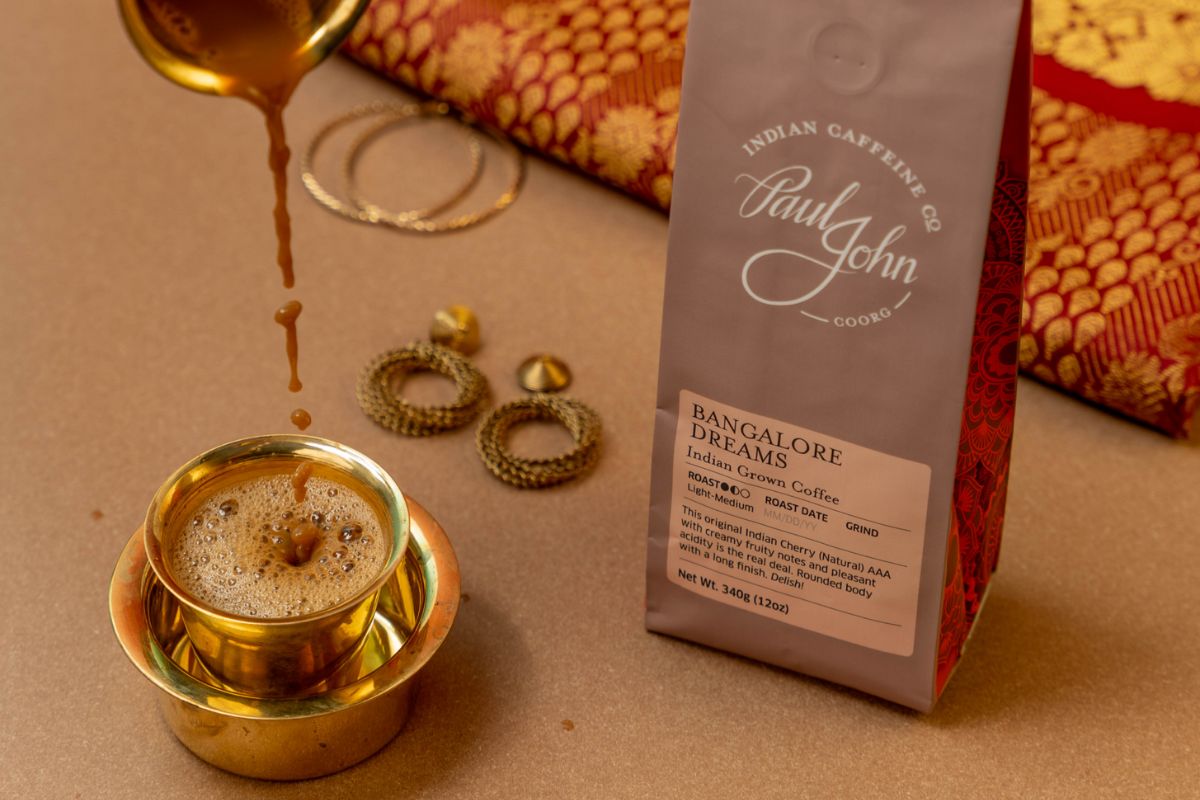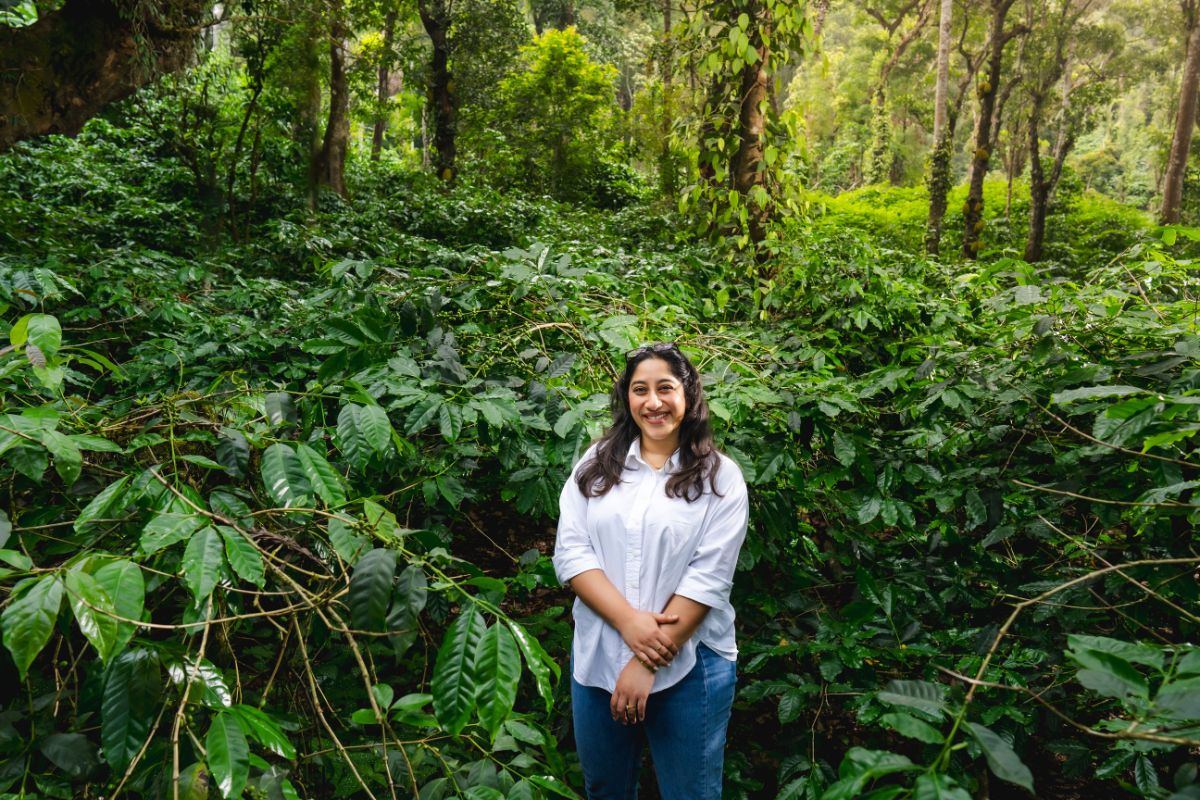Meet Shonali Paul, the founder of the Paul John Caffeine Company. In our latest series on people with inspiring jobs, she discusses her transformative journey from the lush estates of Coorg to establishing a trailblazing coffee enterprise in the U.S., sharing her passion for the rich heritage of Indian coffee.
Could you share the story of your first encounter with coffee at your grandfather’s estate and how it inspired you to start the Paul John Caffeine Company?
When I was growing up, my grandfather would drive from Bangalore to Coorg (where he grew his family) to keep an eye on his beloved estate every single weekend — a six-hour journey each way on rough roads.
We spent every summer in India as a family. On one of my grandfather’s trips, we went with him to see the estates. I remember walking around and seeing the joy in my grandfather’s face as he explained the difference in the coffee plants, the phase in the life cycle the estate was in, and how the coffee gets picked and pulped. It was all very fascinating, but seeing the glimmer in his eyes definitely moved something in me learning about the whole coffee process first hand.
What made you choose to establish your company in the US, particularly Florida, and how do you maintain the authenticity of Indian coffee in a different cultural environment?
I grew up in Tampa, Florida, and have always had a base there, no matter where in the world I moved. So it was very natural to start a business here.
The raw product itself retains the authenticity, but each of our blends are also roasted to bring out the unique flavors of the bean. Our original South Indian filter blend, Smell of Rain, was created by blending arabica and robusta along with roasted chicory in a ratio that is very prominent in the Indian subcontinent.
The brewing techniques we showcase, like South Indian filters, are also something that we’ve maintained authenticity in. For instance, we have hand-poked brass filters (with the traditional cup and saucers to go along with it!) to really give our customers the whole experience of Indian coffee. We aim to stay true to that coffee culture from the Indian subcontinent.
Can you describe the unique characteristics of the coffee grown in Coorg, known as ‘India’s Coffee Cup’, and how these contribute to the distinct flavor profiles of your coffee blends?

Most Indian coffee is grown on individual estates and not by a big corporation. Each estate owner takes immense pride in their product. Since estates are owned individually, local farmers also grow other products like pepper, cardamom, papaya, avocados, and oranges — which adds a unique flavor profile and depth to the coffee beans.
The terrain of the coffee growing regions in India is normally hilly, so natural foliage canopies the estates. This terrain also forces the coffee beans to be hand-picked, which means the ripe beans can be picked right away and the unripe ones can be left a little longer.
All of these factors and many more influence the final cup and allow you to really taste all the effort that goes into growing and harvesting the bean.
The concept of shade-grown coffee beans is fascinating. Could you explain how the surrounding flora influences the flavor of your coffee beans and what makes it different from other coffee beans?
Indian coffee is shade-grown, which means that there is a canopy of foliage covering the estates. This allows the plant to get adequate sunlight without it being too harsh on the plant, resulting in a sweeter flavor profile.
Most coffee estates in India will grow pepper in the taller trees to optimize their land, as well as cardamom, papaya, avocado, and even oranges. Sharing the soil, the coffee plants have notes of these varieties come through ever so slightly, making the coffee very exciting.
As a pioneer in introducing South Indian filter coffee to the US, what challenges did you face in translating this traditional brewing method to a new audience?

With anything new, it’s a slow process. Getting people to try it isn’t always easy — but once they do, they love it. With time, we feel that we’ll be successful in sharing this new brew technique.
Tourism can significantly enhance a coffee plantation’s visibility. What experiences do you offer to tourists who visit your plantation, and how do you educate them about coffee production?
We have a sister concern company, Paul Resorts and Hotels, which has a property on one of my grandfather’s estates called Coorg Wilderness Resort. This ultra luxury property gives you the opportunity to emerge yourself in the region. We have a coffee experience center as well, where the staff takes you through the whole process of the coffee bean, including the roasting and tasting of the coffee. This unit is also our home for the Paul John Caffeine Roastery in India.
How does the Paul John Caffeine Company engage with and impact the local communities in Coorg, Karnataka?
While we don’t own the plantations we partner with, we are active in the local community and support the talented artisans who we source our expertly shade-grown coffee beans from. We also have a resort in Coorg where our roastery is located, so we always make sure to involve the local community in the business.
We are forever tied to the Coorg community — my Grandfather even helped build a church there where my husband and I got married.
As one of the few female leaders in the coffee industry, what has been your experience navigating this male-dominated field, and what advice would you offer to other women looking to carve out their own paths in similar sectors?

So far, most members of the coffee community have been more than welcoming. I would encourage women to take the leap, don’t give up, and try to arm yourself with as much knowledge as possible. The rest will work itself out.
Finally, for our readers who are eager to try brewing South Indian coffee at home, could you provide some tips or a guide to creating the perfect cup using different methods like Moka Pot, French Press, or pour-over?
For our Smell of Rain blend, which is the traditional South Indian filter coffee, a South Indian filter would give you a concentrated coffee which we like to call “decoction.” The next best method would be in a moka pot, with less water to coffee ratio.
For our other blends, any brew method is possible. I would suggest buying whole beans and grinding the bean as close to when you brew. Secondly, a little tip to have a less bitter coffee: Use water that just about reaches boiling temperature, rather than overheating the water used to brew your coffee.

